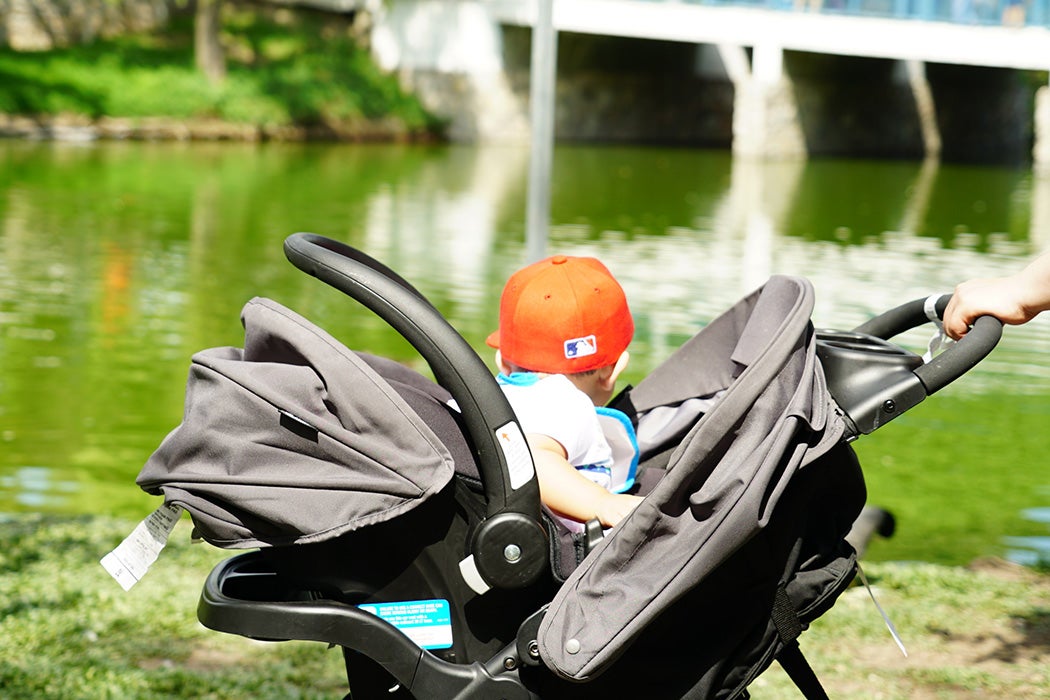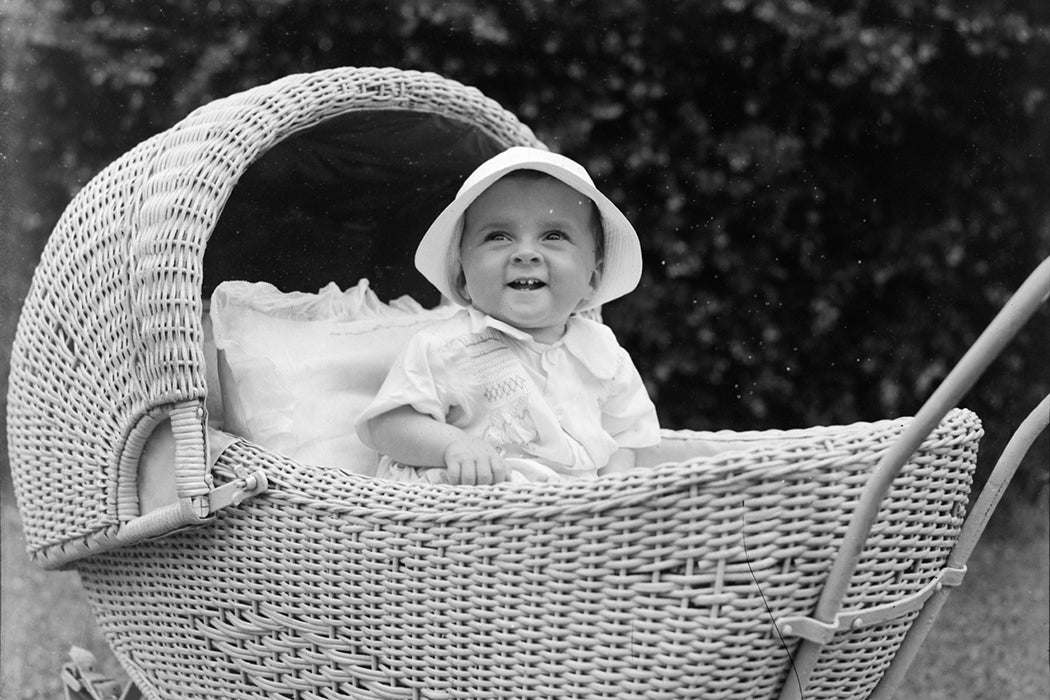Among the challenges of parenthood is solving the problem of “baby transport” in a safe and fashionable way. How can new parents remake their daily lives—errands and exercise and travel—in a way that safely and conveniently incorporates a baby? When it’s time to leave the house for the first time, how will you carry your infant? Perhaps even more important, how will you ensure your toddler makes it from point A to point B with toys still in possession, free from sun- or windburn, but still looking somewhat stylish?
The development of what we now know as a pram goes back to the eighteenth century, though evidence of wheeled conveyances for babies has been found in ancient cultures from Athens to Japan. In 1733, William Kent invented the perambulator (pram) for the Duke and Duchess of Devonshire. More than a century later, in 1853, the first British patent for a pram was issued to Charles Burton. In subsequent years, developments included American W. H. Richardson’s reversible bassinet; a WWII-era gas-safe pram; the light, collapsible strollers pioneered by aeronautical engineer Owen Maclaren; the double stroller (tandem or in-line); and the jogging stroller. The various prams and strollers currently on the market might connote by turns nostalgic domesticity, luxurious wealth, jet-setting urbanism, or unwavering devotion to fitness.
By the time The New York Times ran a real estate piece labeling TriBeCa the “land of the $800 strollers,” the notion of conspicuous baby product consumption as a cultural shorthand for a certain kind of virtuous parenting was ubiquitous. But as early as 1923, in “The History of Children and Invalids’ Carriages,” an address to the Royal Society of Arts, Samuel Sewell claimed that “for the first-born even the poorest mother insists on a new pram,” and then presented a long list of the “numerous accidents,” many fatal, that had resulted from subpar prams. That attitude that a choice in a pram, potentially a matter of life and death, and a physical testament to devoted, safe parenting lingers today in all sorts of advertisements for baby products from strollers to car seats to baby monitors and dubious claims of socks able to detect respiratory distress.

Among the infinite list of products parents are advertised, the stroller is arguably the most public of baby gear. The association (even if often subconscious) of certain brands and categories of baby products not just with safety, diligence, and attentiveness, as Sewell suggested, but with moral, social, or ethical superiority is widespread. Today, it’s not prams nor even $800 strollers but $1,900 UppaBaby VISATA travel systems that line the edges of certain New York playgrounds. In some social circles, the four-figure stroller and its attendant accessories might well serve as a shorthand for a babyhood presided over by cosmopolitan but unhurried mothers and filled with baby music classes, neutral colors, and bento boxes of organic toddler food. In 2000, Janelle Taylor drew a parallel between the meaning ascribed to baby products and a society that views babies themselves as products, noting that pregnancy is “in a variety of ways increasingly firmly embedded within US consumer-capitalist society and culture, as commodities available for consumption like any others.”
An ultrasound technician Taylor spoke with as part of her study of pregnancy and consumption compared patients to “shoppers,” expressing more interest in the baby’s gender than in the anatomical information the ultrasound was meant to gather. It’s easy to see how prescient Taylor’s broader observations about the commodification of pregnancy and childhood were in our world of gender reveal parties and “momfluencers.”
As recently as the early twentieth century, marketing targeted at children and mothers was seen as a kind of profane violation of the sanctity of the home—Sewell’s lecture on subpar prams was about baby safety, not style, after all. Now, though, seeing children and parents as prime grounds for marketing is not unique to prenatal diagnostic. One woman Taylor interviewed recalled going to childbirth classes, where “they were telling us all this different stuff you have to buy, and it all just seemed really intimidating. I mean there’s the baby carrier and the breast pump and the stroller and two different kinds of car seats and I don’t even know how to use them.” The class on childbirth, apparently, was at least in part a class on consumption.
Taylor cites the ways an ethos of consumer capitalism has come to saturate American pregnancy and parenthood. Even more nefarious than the positioning of babies as products is the view of pregnant women as laborers who serve primarily to create that product. In an ideology that centers the role of production in reproduction, “feminists have voiced concern that women are being reduced to the status of unskilled reproductive workers who produce those valued commodities through their alienated labor.”
Weekly Newsletter
Echoes of this view toward children and mothers as products and producers are abundant in the wake of conversations about the declining birthrate and the rollback of reproductive rights in the United States. This often-unspoken attitude was rendered with startling clarity when Supreme Court Justice Alito referenced the CDC’s 2008 report on the diminishing “domestic supply of infants” in the leaked draft of the Dobbs decision.
The stroller, with its relatively long lifespan—at least as baby gear goes—and high-visibility might serve as a metaphor for many aspects of parenthood: the paradoxical imperative to keep children safe while gently pushing them out into the world; the way parenting is at times cumbersome but often also renders caretakers stronger as we navigate the world, and for the deceptive but alluring promise by being the right kind of consumers we can be the right kind of parents raising the right kind of children.







